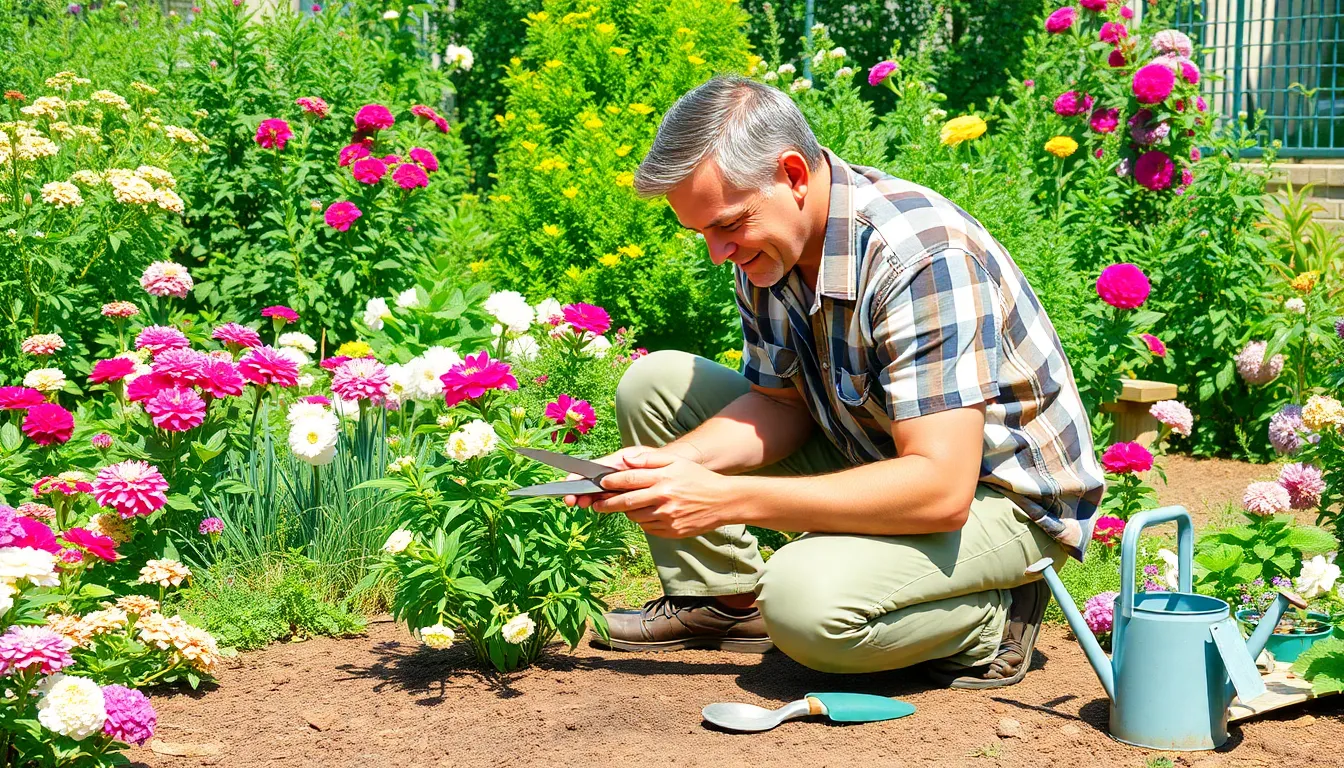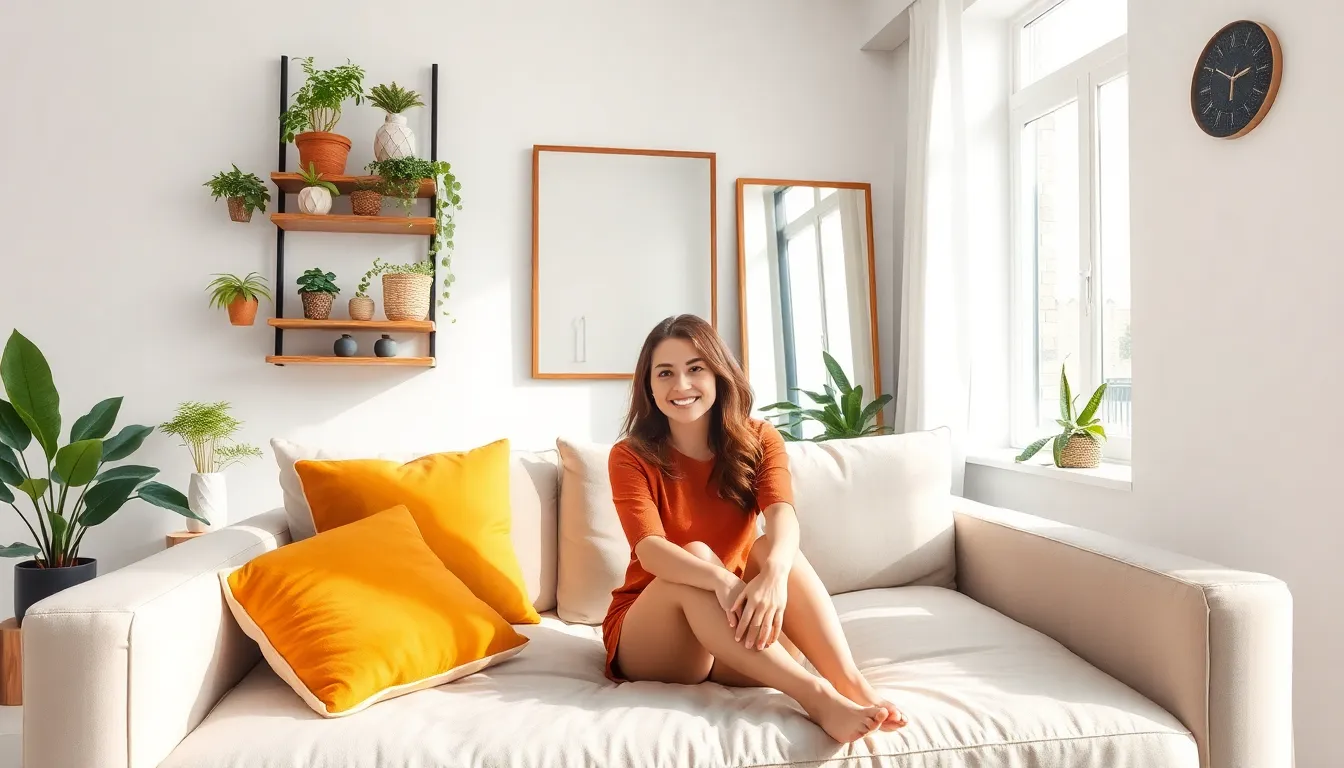In a world where plastic seems to be the reigning champion of home decor, eco-friendly decor is like that underdog hero ready to save the day. Imagine transforming your living space into an oasis that not only looks good but also helps Mother Earth breathe a little easier. Who knew going green could be so stylish?
Table of Contents
ToggleWhat Is Eco-Friendly Decor?
Eco-friendly decor refers to home furnishings, decorations, and materials that prioritize sustainability and environmental conservation. This approach embraces natural materials like bamboo, reclaimed wood, and organic textiles, avoiding harmful chemicals and synthetic substances. Sustainable decor promotes the use of recycled or upcycled items, reducing waste and minimizing the carbon footprint.
Energy-efficient lighting also plays a crucial role in eco-friendly design. Incorporating LED bulbs and solar-powered fixtures enhances aesthetic appeal while conserving energy. Plants serve as another essential element; they improve air quality and add a vibrant touch to indoor spaces.
Moreover, eco-friendly decor often involves choosing local artisans and suppliers. Supporting local businesses not only strengthens the community but also reduces the transportation emissions associated with sourcing materials. The authenticity and craftsmanship of locally made products enhance the overall appeal of living spaces.
Another aspect includes opting for eco-certifications when selecting decor items. Certifications, such as the Forest Stewardship Council (FSC) for wood products and Global Organic Textile Standard (GOTS) for fabrics, ensure that materials meet stringent environmental and social standards. These labels provide consumers with peace of mind regarding their purchases.
Ultimately, eco-friendly decor transforms homes into stylish, sustainable environments. By making conscious choices about materials and sourcing, individuals create spaces that reflect their values while contributing positively to the planet. Embracing sustainable practices in design leads to a healthier lifestyle and a more vibrant world.
Benefits Of Eco-Friendly Decor

Eco-friendly decor offers numerous advantages, making it an appealing choice for conscious consumers. Emphasis on sustainability in home furnishings contributes to healthier living spaces.
Sustainable Materials
Sustainable materials play a crucial role in eco-friendly decor. Bamboo, reclaimed wood, and organic textiles consist of renewable resources, reducing the demand for non-renewable products. Products made from these materials often minimize toxic emissions and provide durability. Consumers can enjoy attractive aesthetics that come from nature while supporting responsible harvesting practices. Additionally, selecting items certified by organizations like the Forest Stewardship Council (FSC) ensures that materials meet environmental and social standards.
Reduced Environmental Impact
Reduced environmental impact characterizes eco-friendly decor. Choosing energy-efficient lighting, such as LED bulbs and solar-powered fixtures, lowers overall energy consumption. Incorporating plants into spaces enhances air quality while creating a more inviting atmosphere. Supporting local artisans decreases transportation emissions, fostering community growth. Ultimately, the use of eco-friendly decor encourages a lifestyle that prioritizes conservation and promotes social responsibility.
Types Of Eco-Friendly Decor
Eco-friendly decor encompasses various styles and products that promote sustainability. Exploring specific types highlights options for creating beautiful, environmentally responsible spaces.
Upcycled Furniture
Upcycled furniture brings new life to discarded items, transforming them into stylish home pieces. Old doors can become unique tables, while vintage dressers can serve as chic storage solutions. Shoppers often find locally sourced upcycled goods at thrift stores or flea markets, supporting community artisans. Choosing upcycled furniture reduces landfill waste and decreases the demand for new materials. Additionally, these pieces offer unique aesthetic qualities that standard furniture lacks, enhancing personal style.
Natural Fiber Textiles
Natural fiber textiles provide sustainable alternatives to conventional fabrics, using materials like cotton, linen, and hemp. Choosing organic cotton ensures that farming practices support environmental health. Linen, made from flax plants, has lower water requirements, making it a resource-efficient choice. Beyond sustainability, these textiles enhance indoor comfort and style, offering breathable and hypoallergenic benefits. Bedding, curtains, and upholstery made from natural fibers contribute to healthier living environments while reflecting a commitment to eco-consciousness.
Non-Toxic Paints
Non-toxic paints prioritize health and safety without compromising on aesthetics. Formulated without harsh chemicals, these paints reduce indoor air pollution. Options include water-based or low-VOC (volatile organic compound) paints, which emit fewer harmful emissions. Selecting non-toxic paints also benefits the environment, as they often come in recyclable containers. The broad range of colors available allows homeowners to express creativity while ensuring safety for family members and pets. This choice demonstrates an understanding of the connection between decor and personal well-being.
Tips For Creating An Eco-Friendly Space
Creating an eco-friendly space involves mindful choices that reflect sustainability and style. Focus on selecting materials and products that minimize environmental impact while enhancing home aesthetics.
Choosing Sustainable Products
Sustainable products come from renewable resources, like bamboo and reclaimed wood. Prioritizing items with eco-certifications, such as FSC or GOTS, ensures ethical sourcing and production. Opt for furnishings made with non-toxic finishes and natural fibers. Furniture manufacturers often use recycled materials, which helps reduce landfill waste. Consider supporting local artisans to boost community economies and decrease transportation emissions. When selecting decorative items, seek organic textiles and biodegradable materials for a fully sustainable approach. Aim for longevity in purchases to reduce the need for replacements, reinforcing a responsible lifestyle.
Incorporating Plants
Incorporating plants into home decor creates a natural aesthetic while improving air quality. Choose indoor plants, such as snake plants or pothos, known for their ability to filter toxins. Use hanging planters or shelves to showcase greenery in limited spaces. Biophilic designs enhance well-being by connecting indoor environments with nature. Small herbs in the kitchen can add freshness to meals and decor. Prioritize plants that require minimal water and care to ensure sustainability. Incorporate plants as focal points to introduce color and vibrancy while supporting overall health and happiness.
Embracing eco-friendly decor offers an opportunity to create stylish spaces that reflect a commitment to sustainability. By choosing natural materials and supporting local artisans, individuals can transform their homes into healthier environments while contributing to community growth.
The integration of plants and energy-efficient lighting further enhances both aesthetics and air quality. Each mindful choice made in home decor not only beautifies a space but also fosters a more vibrant planet.
As awareness of environmental issues grows, eco-friendly decor stands out as a practical and fashionable solution for those looking to make a positive impact without sacrificing style.



